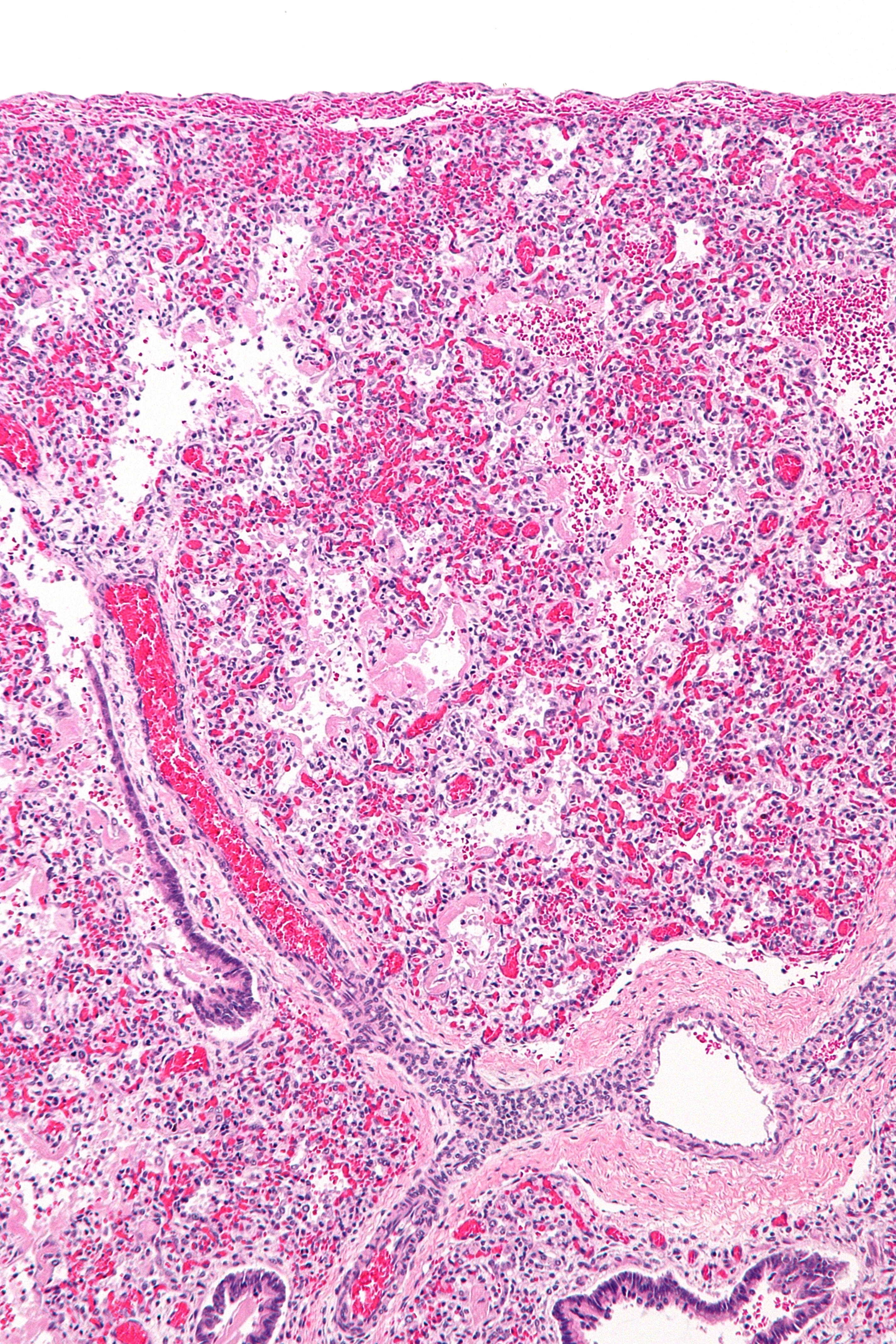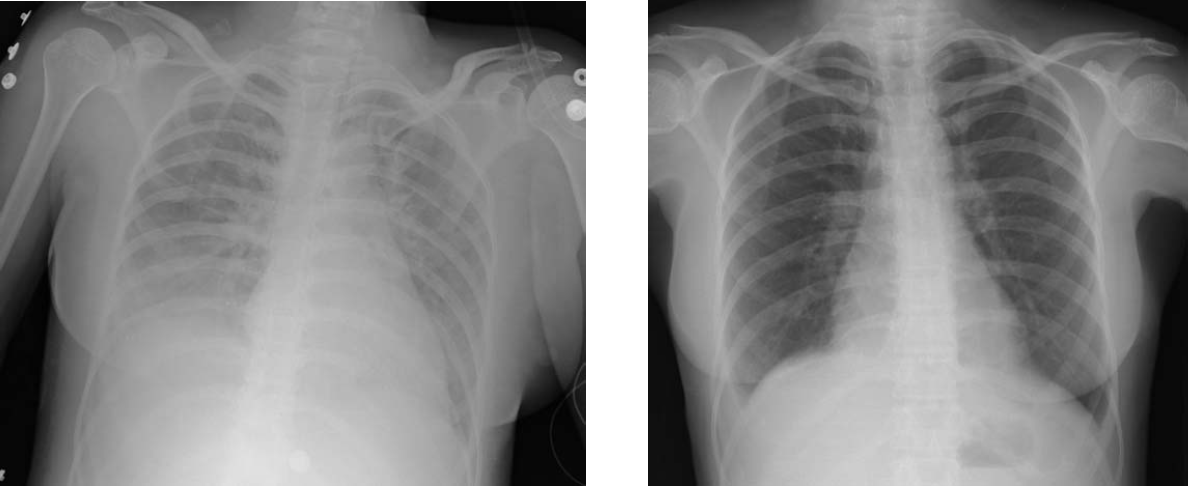|
Fraction Of Inspired Oxygen
Fraction of inspired oxygen (''FI''O2), corrected denoted with a capital "I", is the molar or volumetric fraction of oxygen in the inhaled gas. Medical patients experiencing difficulty breathing are provided with oxygen-enriched air, which means a higher-than-atmospheric ''FI''O2. Natural air includes 21% oxygen, which is equivalent to ''FI''O2 of 0.21. Oxygen-enriched air has a higher ''FI''O2 than 0.21; up to 1.00 which means 100% oxygen. ''FI''O2 is typically maintained below 0.5 even with mechanical ventilation, to avoid oxygen toxicity, but there are applications when up to 100% is routinely used. Often used in medicine, the ''FI''O2 is used to represent the percentage of oxygen participating in gas-exchange. If the barometric pressure changes, the ''FI''O2 may remain constant while the partial pressure of oxygen changes with the change in barometric pressure. Equations ;Abbreviated alveolar air equation :P_A \ce = \frac PAO2, PEO2, and PIO2 are the partial pressures of oxy ... [...More Info...] [...Related Items...] OR: [Wikipedia] [Google] [Baidu] |
Oxygen Toxicity
Oxygen toxicity is a condition resulting from the harmful effects of breathing molecular oxygen () at increased partial pressures. Severe cases can result in cell damage and death, with effects most often seen in the central nervous system, lungs, and eyes. Historically, the central nervous system condition was called the Paul Bert effect, and the pulmonary condition the Lorrain Smith effect, after the researchers who pioneered the discoveries and descriptions in the late 19th century. Oxygen toxicity is a concern for underwater divers, those on high concentrations of supplemental oxygen (particularly premature babies), and those undergoing hyperbaric oxygen therapy. The result of breathing increased partial pressures of oxygen is hyperoxia, an excess of oxygen in body tissues. The body is affected in different ways depending on the type of exposure. Central nervous system toxicity is caused by short exposure to high partial pressures of oxygen at greater than atmospheric pr ... [...More Info...] [...Related Items...] OR: [Wikipedia] [Google] [Baidu] |
Hypoxemia
Hypoxemia is an abnormally low level of oxygen in the blood. More specifically, it is oxygen deficiency in arterial blood. Hypoxemia has many causes, and often causes hypoxia as the blood is not supplying enough oxygen to the tissues of the body. Definition ''Hypoxemia'' refers to the low level of oxygen in blood, and the more general term ''hypoxia'' is an abnormally low oxygen content in any tissue or organ, or the body as a whole. Hypoxemia can cause hypoxia (hypoxemic hypoxia), but hypoxia can also occur via other mechanisms, such as anemia. Hypoxemia is usually defined in terms of reduced partial pressure of oxygen (mm Hg) in arterial blood, but also in terms of reduced content of oxygen (ml oxygen per dl blood) or percentage saturation of hemoglobin (the oxygen-binding protein within red blood cells) with oxygen, which is either found singly or in combination. While there is general agreement that an arterial blood gas measurement which shows that the partial pressure of ... [...More Info...] [...Related Items...] OR: [Wikipedia] [Google] [Baidu] |
Alveolar Air Equation
The alveolar gas equation is the method for calculating partial pressure of alveolar oxygen (PAO2). The equation is used in assessing if the lungs are properly transferring oxygen into the blood. The alveolar air equation is not widely used in clinical medicine, probably because of the complicated appearance of its classic forms. The partial pressure of oxygen (pO2) in the pulmonary alveoli is required to calculate both the alveolar-arterial gradient of oxygen and the amount of right-to-left cardiac shunt, which are both clinically useful quantities. However, it is not practical to take a sample of gas from the alveoli in order to directly measure the partial pressure of oxygen. The alveolar gas equation allows the calculation of the alveolar partial pressure of oxygen from data that is practically measurable. It was first characterized in 1946. Assumptions The equation relies on the following assumptions: * Inspired gas contains no carbon dioxide (CO2) * Nitrogen (and any othe ... [...More Info...] [...Related Items...] OR: [Wikipedia] [Google] [Baidu] |
Community Acquired Pneumonia
Community-acquired pneumonia (CAP) refers to pneumonia (any of several lung diseases) contracted by a person outside of the healthcare system. In contrast, hospital-acquired pneumonia (HAP) is seen in patients who have recently visited a hospital or who live in long-term care facilities. CAP is common, affecting people of all ages, and its symptoms occur as a result of oxygen-absorbing areas of the lung (alveoli) filling with fluid. This inhibits lung function, causing dyspnea, fever, chest pains and cough. CAP, the most common type of pneumonia, is a leading cause of illness and death worldwide. Its causes include bacteria, viruses, fungi and parasites. CAP is diagnosed by assessing symptoms, performing a physical examination, by x-ray or by sputum examination. Patients with CAP sometimes require hospitalization, and it is treated primarily with antibiotics, antipyretics and cough medicine. Some forms of CAP can be prevented by vaccination and by abstaining from tobacco products. ... [...More Info...] [...Related Items...] OR: [Wikipedia] [Google] [Baidu] |
Acute Respiratory Distress Syndrome
Acute respiratory distress syndrome (ARDS) is a type of respiratory failure characterized by rapid onset of widespread inflammation in the lungs. Symptoms include shortness of breath (dyspnea), rapid breathing (tachypnea), and bluish skin coloration (cyanosis). For those who survive, a decreased quality of life is common. Causes may include sepsis, pancreatitis, trauma, pneumonia, and aspiration. The underlying mechanism involves diffuse injury to cells which form the barrier of the microscopic air sacs of the lungs, surfactant dysfunction, activation of the immune system, and dysfunction of the body's regulation of blood clotting. In effect, ARDS impairs the lungs' ability to exchange oxygen and carbon dioxide. Adult diagnosis is based on a PaO2/FiO2 ratio (ratio of partial pressure arterial oxygen and fraction of inspired oxygen) of less than 300 mm Hg despite a positive end-expiratory pressure (PEEP) of more than 5 cm H2O. Cardiogenic pulmonary edema, a ... [...More Info...] [...Related Items...] OR: [Wikipedia] [Google] [Baidu] |
Acute Respiratory Distress Syndrome
Acute respiratory distress syndrome (ARDS) is a type of respiratory failure characterized by rapid onset of widespread inflammation in the lungs. Symptoms include shortness of breath (dyspnea), rapid breathing (tachypnea), and bluish skin coloration (cyanosis). For those who survive, a decreased quality of life is common. Causes may include sepsis, pancreatitis, trauma, pneumonia, and aspiration. The underlying mechanism involves diffuse injury to cells which form the barrier of the microscopic air sacs of the lungs, surfactant dysfunction, activation of the immune system, and dysfunction of the body's regulation of blood clotting. In effect, ARDS impairs the lungs' ability to exchange oxygen and carbon dioxide. Adult diagnosis is based on a PaO2/FiO2 ratio (ratio of partial pressure arterial oxygen and fraction of inspired oxygen) of less than 300 mm Hg despite a positive end-expiratory pressure (PEEP) of more than 5 cm H2O. Cardiogenic pulmonary edema, a ... [...More Info...] [...Related Items...] OR: [Wikipedia] [Google] [Baidu] |
Horowitz Index
The Horowitz index or Horovitz index (also known as the Horowitz quotient or the P/F ratio) is a ratio used to assess lung function in patients, particularly those on ventilators. It is useful for evaluating the extent of damage to the lungs. The simple abbreviation as oxygenation can lead to confusion with other conceptualizations of oxygenation index. The Horowitz index is defined as the ratio of partial pressure of oxygen in blood (PaO2), in millimeters of mercury, and the fraction of oxygen in the inhaled air (FiO2) — the ''PaO2''/''FiO2 ratio''. In healthy lungs, the Horowitz index depends on age and usually falls between 350 and 450. A value below 300 is the threshold for mild lung injury, and 200 is indicative of a moderately severe lung injury. A value below 100 is a criterion for a severe injury. The Horowitz index plays a major role in the diagnosis of acute respiratory distress syndrome (ARDS). Three severities of ARDS are categorized based on the degree of h ... [...More Info...] [...Related Items...] OR: [Wikipedia] [Google] [Baidu] |
Blood Gas Tension
Blood gas tension refers to the partial pressure of gases in blood. There are several significant purposes for measuring gas tension. The most common gas tensions measured are oxygen tension (PxO2), carbon dioxide tension (PxCO2) and carbon monoxide tension (PxCO). The subscript ''x'' in each symbol represents the source of the gas being measured: "''a''" meaning arterial, "''A''" being alveolar, "''v''" being venous, and "''c''" being capillary. Blood gas tests (such as arterial blood gas An arterial blood gas (ABG) test, or arterial blood gas analysis (ABGA) measures the amounts of arterial gases, such as oxygen and carbon dioxide. An ABG test requires that a small volume of blood be drawn from the radial artery with a syringe an ... tests) measure these partial pressures. Oxygen tension ;Arterial blood oxygen tension (normal) PaO2 – Partial pressure of oxygen at sea level (160 mmHg in the atmosphere, 21% of standard atmospheric pressure of 760 mmHg) in arterial bl ... [...More Info...] [...Related Items...] OR: [Wikipedia] [Google] [Baidu] |
Lung Injury
The lungs are the primary organs of the respiratory system in humans and most other animals, including some snails and a small number of fish. In mammals and most other vertebrates, two lungs are located near the backbone on either side of the heart. Their function in the respiratory system is to extract oxygen from the air and transfer it into the bloodstream, and to release carbon dioxide from the bloodstream into the atmosphere, in a process of gas exchange. Respiration is driven by different muscular systems in different species. Mammals, reptiles and birds use their different muscles to support and foster breathing. In earlier tetrapods, air was driven into the lungs by the pharyngeal muscles via buccal pumping, a mechanism still seen in amphibians. In humans, the main muscle of respiration that drives breathing is the diaphragm. The lungs also provide airflow that makes vocal sounds including human speech possible. Humans have two lungs, one on the left and one on the ... [...More Info...] [...Related Items...] OR: [Wikipedia] [Google] [Baidu] |
PaO2
Blood gas tension refers to the partial pressure of gases in blood. There are several significant purposes for measuring gas tension. The most common gas tensions measured are oxygen tension (PxO2), carbon dioxide tension (PxCO2) and carbon monoxide tension (PxCO). The subscript ''x'' in each symbol represents the source of the gas being measured: "''a''" meaning arterial, "''A''" being alveolar, "''v''" being venous, and "''c''" being capillary. Blood gas tests (such as arterial blood gas tests) measure these partial pressures. Oxygen tension ;Arterial blood oxygen tension (normal) PaO2 – Partial pressure of oxygen at sea level (160 mmHg in the atmosphere, 21% of standard atmospheric pressure of 760 mmHg) in arterial blood is between 75 mmHg and 100 mmHg. ;Venous blood oxygen tension (normal) PvO2 – Oxygen tension in venous blood at sea level is between 30 mmHg and 40 mmHg. Carbon dioxide tension Carbon dioxide is a by-product of food metabolism ... [...More Info...] [...Related Items...] OR: [Wikipedia] [Google] [Baidu] |
Medicine
Medicine is the science and practice of caring for a patient, managing the diagnosis, prognosis, prevention, treatment, palliation of their injury or disease, and promoting their health. Medicine encompasses a variety of health care practices evolved to maintain and restore health by the prevention and treatment of illness. Contemporary medicine applies biomedical sciences, biomedical research, genetics, and medical technology to diagnose, treat, and prevent injury and disease, typically through pharmaceuticals or surgery, but also through therapies as diverse as psychotherapy, external splints and traction, medical devices, biologics, and ionizing radiation, amongst others. Medicine has been practiced since prehistoric times, and for most of this time it was an art (an area of skill and knowledge), frequently having connections to the religious and philosophical beliefs of local culture. For example, a medicine man would apply herbs and say prayers for healing, o ... [...More Info...] [...Related Items...] OR: [Wikipedia] [Google] [Baidu] |





